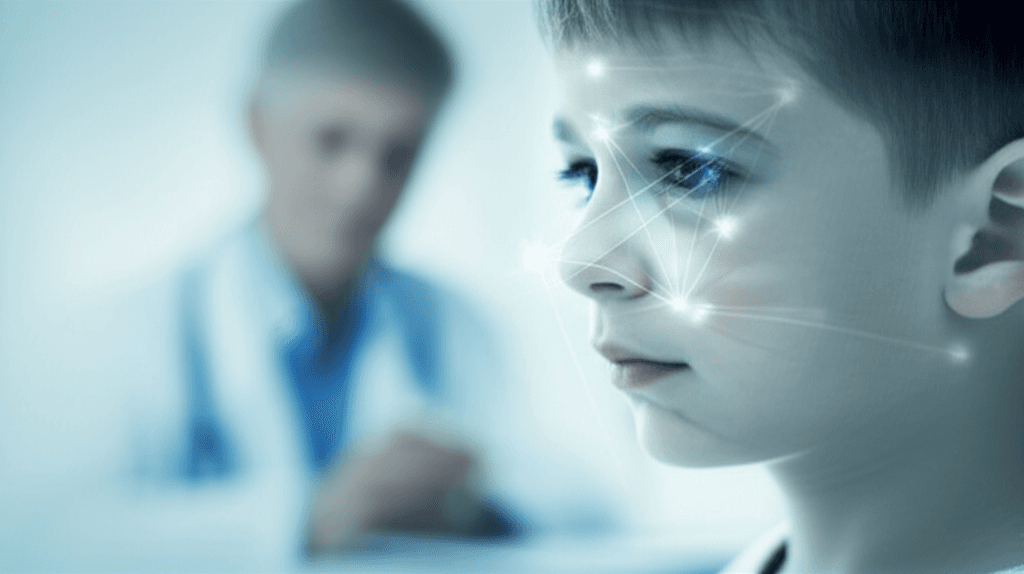USF AI Transforms Child PTSD Diagnosis, Reading Faces for Hidden Trauma
AI analyzes children's subtle facial movements to detect PTSD, providing objective, privacy-preserving insights for clinicians.
July 7, 2025

A new frontier in pediatric mental healthcare is emerging, where artificial intelligence may soon help clinicians identify post-traumatic stress disorder in children by analyzing their facial expressions. This technology aims to provide an objective layer of insight into a diagnostic process that has long relied on subjective methods. Diagnosing PTSD in children is notoriously challenging due to their limited communication skills, emotional awareness, and tendency to suppress distressing feelings.[1][2] Researchers are now developing AI-powered tools that can detect subtle, often fleeting, facial muscle movements associated with trauma, potentially offering a more accurate and less intrusive way to assess a child's mental state.[3][4] This development sits at the intersection of advanced computing and sensitive clinical practice, raising both promise and important questions for the future of mental health diagnostics and the AI industry.
At the forefront of this research is a team from the University of South Florida, led by social work professor Alison Salloum and AI expert Shaun Canavan.[3][4] Their pioneering system analyzes facial movements to help clinicians identify PTSD in young patients.[3] The idea stemmed from Salloum's clinical observation that even when children were not verbally expressive, their faces revealed intense emotions during discussions about trauma.[3][1] This led to a collaboration to determine if AI could systematically detect these non-verbal cues. The resulting technology focuses on privacy, a critical concern in pediatric mental health. Instead of analyzing raw video footage, the system processes de-identified data, tracking head movement, eye gaze, and facial landmarks without storing any personally identifiable information.[3][2] This privacy-preserving approach is a key feature, aiming to build trust and ensure the ethical application of the technology.[3][5]
The University of South Florida study involved analyzing over 100 minutes of video footage from therapy sessions for each of the 18 child participants, amounting to hundreds of thousands of video frames.[3][4] The AI models were trained to identify patterns in facial muscle movements linked to emotional expression.[1] The findings were significant: the AI detected distinct and consistent facial movement patterns in children with PTSD.[5][1][2] Interestingly, the study also found that children's facial expressions were more revealing during interviews with clinicians than in conversations with their parents.[4][5][1] This aligns with existing psychological research suggesting that children may be more emotionally expressive with therapists, while potentially suppressing distress in front of their parents out of shame or other cognitive factors.[5][1] The researchers emphasize that the tool is not meant to replace clinicians but to augment their abilities, providing an extra layer of insight to enhance diagnosis and track treatment progress over time without repeated, potentially distressing evaluations.[3][1]
The broader implications of using AI to analyze facial expressions for mental health diagnosis are vast and complex. This technology is part of a larger trend of using AI in behavioral health for tasks like risk assessment, crisis intervention, and predicting treatment outcomes.[6][7] Proponents argue that AI can increase diagnostic accuracy, personalize care, and improve access to mental health services, particularly in underserved communities.[8][9] For instance, similar AI-driven approaches are being explored for diagnosing autism spectrum disorder with high accuracy by analyzing retinal images.[10] However, the use of AI in pediatric mental healthcare is not without significant ethical challenges.[11][6] Critics and ethicists raise concerns about data privacy, algorithmic bias, and the need for robust regulatory frameworks.[12][8] An AI system is only as good as the data it is trained on, and if the training data is not representative of diverse populations, it could perpetuate or even worsen existing health inequities.[11][13] There are also concerns that overreliance on technology could impair a child's social and emotional development, as some evidence suggests children may form attachments to AI at the expense of human relationships.[11][13]
As this technology moves from research to potential real-world application, the path forward requires careful navigation. The USF research team plans to expand their study to address potential biases related to gender, culture, and age, with a particular focus on preschool-aged children who have very limited verbal communication abilities.[3] Validating the system in larger, more diverse trials will be crucial to ensure its reliability and fairness.[4] Beyond the technical validation, a broader societal conversation is necessary to establish ethical guidelines and regulations for the use of AI in mental healthcare.[6][12] Issues of informed consent, transparency in how the AI reaches its conclusions, and accountability for diagnostic errors must be thoroughly addressed.[6][12] The ultimate goal is to create tools that can be responsibly integrated into clinical practice, serving as a valuable supplement to, but not a replacement for, the nuanced judgment and empathetic connection of a human therapist. If developed and deployed ethically, AI that tracks facial expressions could mark a transformative shift in how PTSD is identified and managed in children, bringing greater accuracy and empathy to some of the most vulnerable patients.[3]